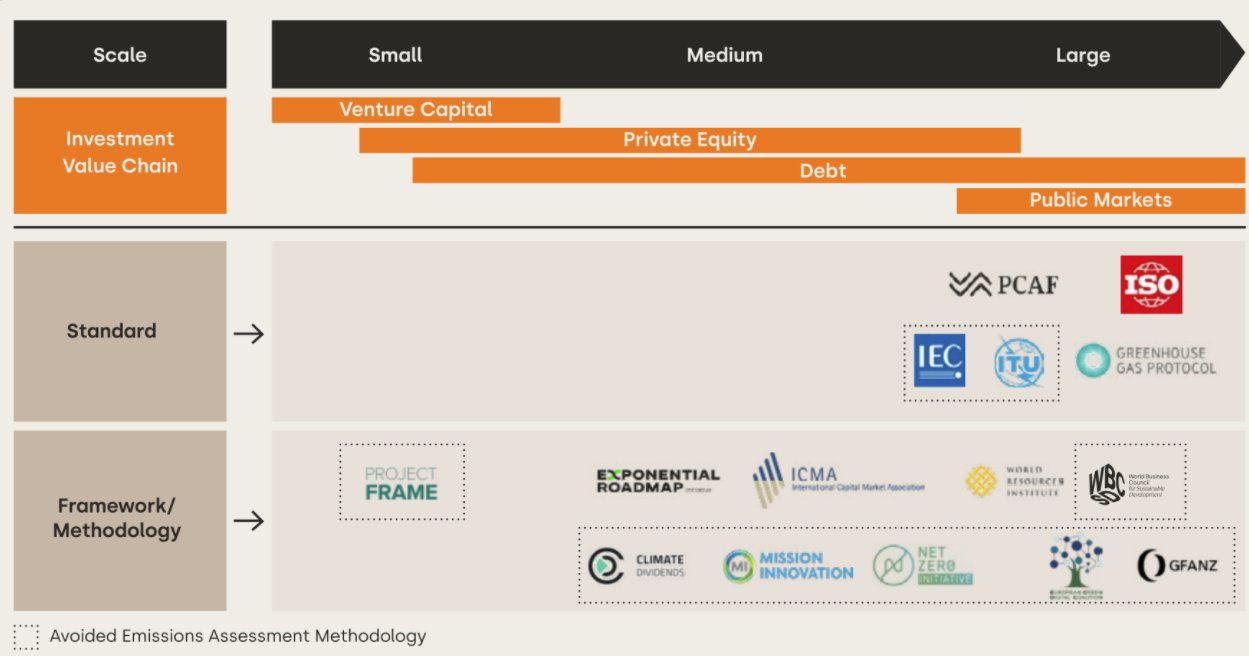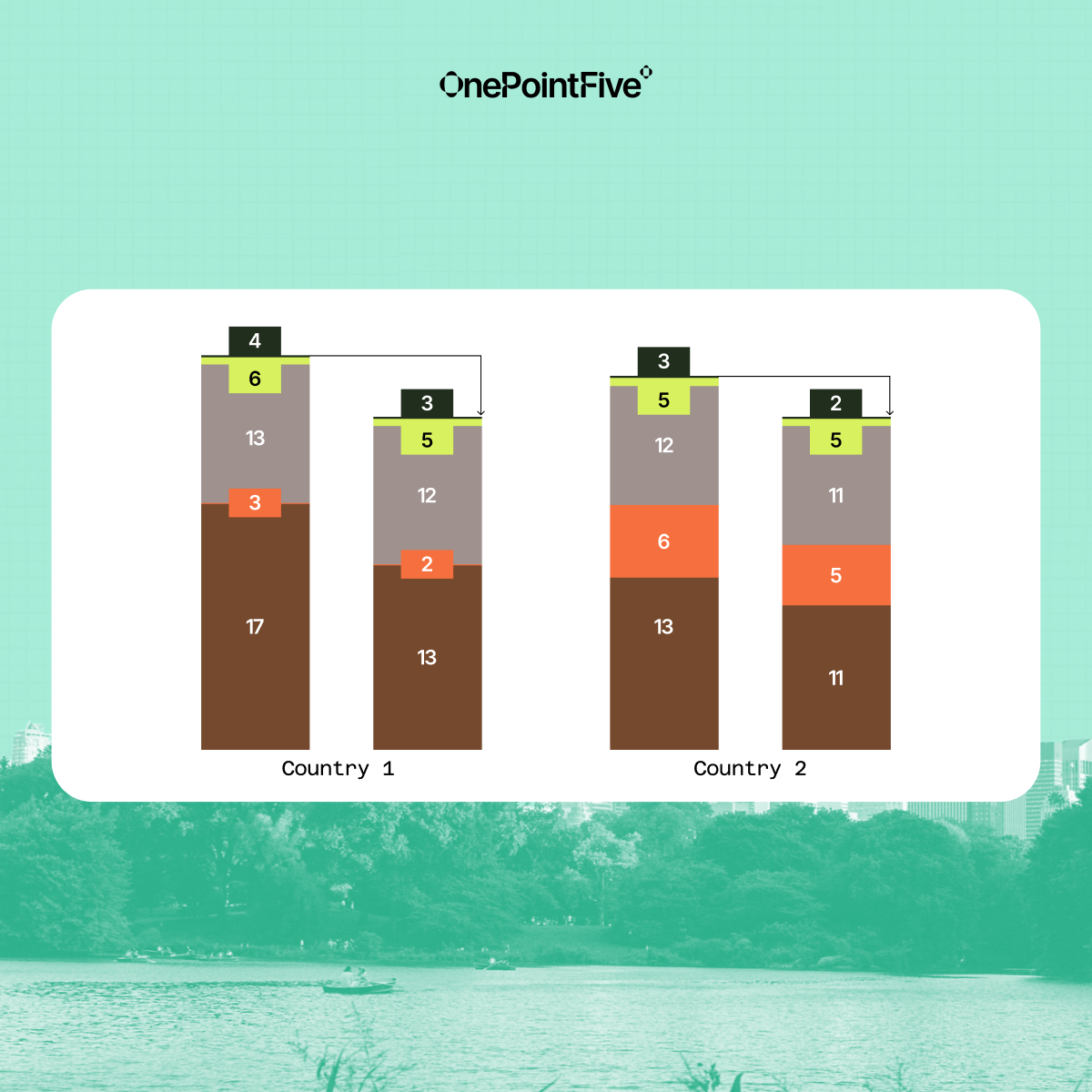Avoided Emissions vs. GHG Accounting: Why Traditional Carbon Footprints Are No Longer Enough
By Neil Yeoh, CEO & Founder, OnePointFive.
The climate crisis demands not only risk management but proactive investment in solutions that accelerate decarbonization. While traditional carbon footprinting (Scope 1-3) has guided corporate climate action, it’s no longer enough. A new frontier is emerging—Avoided Emissions (AE)—shifting the narrative from risk mitigation to impact opportunity, as outlined by a recently published report.
What Are Avoided Emissions?
Avoided emissions refer to the systemic emissions reductions enabled by a product or service compared to a business-as-usual (counterfactual) scenario. Unlike operational emissions tracking, AE measures the impact of solutions delivered to the market—whether inside or outside a company’s direct value chain.
This methodology emphasizes:
Counterfactual analysis—what emissions would have occurred without the solution
Systemic change potential—highlighting transformative innovations rather than incremental shifts
Forward-looking impact—providing a lens on both realized and future decarbonization contributions
Similar to the complex landscape of ESG/Sustainability standards, frameworks, and regulations (which we covered in Part II of our Sustainability Handbook, downloaded >700 times), emerging Avoided Emissions (AE) standards and methodologies face similar challenges (see Figure 1. below). However, this does not diminish the critical importance of applying collective best practices across the AE landscape. By doing so, we can ensure that climate tech startups, from innovation to financing, contribute to tangible avoided emissions—rather than inadvertently adding to them.
Figure 1. Landscape of existing and emergent Avoided Emission standards & methodologies (Source)
Why Does This Matter for Investors and Businesses?
For organizations, Avoided Emissions enable:
Strategy and innovation focused on climate-positive growth opportunities
Product development prioritizing solutions with demonstrable emissions impact
Competitive differentiation in a market increasingly driven by sustainability credentials
Access to sustainable finance channels, including transition bonds and impact-linked lending
For funds, Avoided Emissions enable:
Screening and selecting high-impact investments
Portfolio monitoring and performance reporting
Stakeholder reporting and regulatory compliance
Capital raising through evidence-backed claims
Driving valuation by quantifying decarbonization potential
The Updated Methodology Landscape: Project Frame x WBCSD
The report compares and aligns two leading methodologies, namely Project Frame (2024) — Tailored for early-stage investors assessing future impact potential which we helped to contribute covered in this Q&A with Project Frame and Neil Yeoh, OnePointFive’s CEO; and WBCSD Guidance (2025) — Designed for corporates focusing on operational alignment and public disclosure.
“Currently, most leading greenhouse gas accounting methodologies focus on measuring and reducing emissions from business-as-usual practices within existing industries. We need ways to robustly evaluate the forward-looking emission reduction potential of scalable climate technology solutions that will displace existing industry practices,” — Neil Yeoh, Q&A with Project Frame.
Key methodological themes across Frame and WBCSD include:
System boundaries and baselines—Critical for credible impact assessment
Functional units and lifecycle emissions accounting—Defining what’s measured and how
Data transparency and traceability—Building trust through robust data hierarchies and assumptions
Attribution and allocation clarity—Avoiding double-counting in complex value chains
Eligibility criteria and credibility gates—Ensuring AE claims are legitimate and science-aligned
What Needs to Happen Next?
Despite growing momentum, AE methodologies remain fragmented. The report calls for:
Global convergence of methodologies—driven by multi-stakeholder collaboration
Standardized baseline scenarios—to improve consistency and comparability
Better data-sharing infrastructure—enabling credible assessments
Integration into regulatory and financial reporting frameworks—especially for SFDR Article 8/9 funds and green bonds
Capacity building across investors and corporates—to drive uptake and impact literacy
The Bottom Line?
Avoided Emissions is more than a metric. It’s a strategic lens that can unlock capital flows towards scalable, systemic climate solutions. Investors and businesses that integrate AE thinking into their decision-making will be better positioned to deliver real-world impact—and capture the value that comes with it.
Improving access to tools and services to build robust emission reduction potential models and analyses for investors, startups, and organizations is crucial. It is well and good to agree on a standardized methodology and approach to measuring emissions reduction potential, but the hard work starts with wide-scale implementation.
This is a two-sided challenge. On one hand, those developing the tools and providing the expertise need to work off a similar methodological approach for our models to be compared against each other and evaluate emission reduction potential at a larger scale across a suite of solutions. On the other hand, startups and funds need to have access to the right expertise and tools to measure emissions reduction potential and make decisions from the results and insights of that work.
Case Studies That Ground Theory in Practice
To put the emerging standards and methodologies into action, we’ve partnered with several climate tech startups, using Life Cycle Assessment (LCA) modeling to calculate emission reduction potential through to avoided emissions. Notable examples include:
Life Cycle Assessment Model to Evaluate Patient Care Emissions:
We partnered with a global pharmaceutical company to evaluate the avoided emissions potential of digital versus in-person healthcare delivery across two major markets. By modeling six patient care pathways and identifying key emissions hotspots, the assessment revealed opportunities to reduce emissions at scale—up to ~500 million kg CO₂e—while considering accessibility, equity, and data privacy. View case study here
LCA Training & Technical Assistance for Startup Accelerators:
We provided training to a cohort of startups within an accelerator program, offering technical support to develop four screening LCAs. These assessments provided avoided emissions estimates, which helped attract investors and communicate sustainability efforts to external stakeholders.
Additionally, we have formed multiyear partnerships with Private Equity firm TPG and Blended Finance fund Australian Development Investment (ADI). Through these collaborations, we provide fractional climate services and training to their portfolio companies, ensuring that the theory behind avoided emissions translates into real-world decarbonization results.




